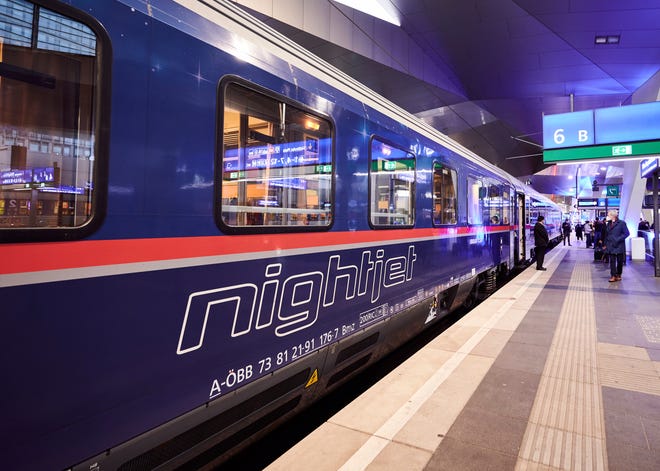As more people reconsider how they travel on a warming planet, a small but growing contingent in Europe wants to move from high-emissions short-haul planes to more climate-friendly sleeper trains.
But despite all the climate benefits – as well as the romantic, sustainable side of overnight train travel – it's not always easy to plan a vacation around those benefits.
Several national railroads and private operators have moved in to meet the growing demand, and the result is a patchwork of overnight routes sold on more than 30 different websites. Many routes do not run every day, and online ticket aggregators do not include all countries with night trains.
“I've always traveled by train, boat and bus, so this was normal for me,” said Cat Jones, founder of flight-free travel company Byway. “But friends were like, 'Oh, that sounds amazing, but I'm not going to plan all that.' “
Proponents of sleeper trains, however, say the experience and convenience of riding the rails are worth any hassle of booking. With patience and a few tips, you'll never have to worry about airport queues in the middle of your European vacation.
Air transport in Europe is a disaster.Trains are a cheaper and faster workaround.

1. Start with a little research
First, make sure routes exist between the desired cities. Back on Track, a European rail industry advocacy group, maintains a night train database with all current and soon-to-be-launched routes on the continent. Just be aware that city names are listed with local spellings, such as Praha for Prague.
Then head to the sleeper train section of Man in Seat 61, a website run by former rail industry employee Mark Smith that explains exhaustively what to expect. The site has details on dozens of international routes, down to seat and berth numbers on specific trains – and even photos of the food and where to find electrical outlets.
Many operators offer perks like breakfast and free water, and some allow female travelers to reserve spaces shared only with other women.
Once you've found the right route, check out Trainline and RailEurope, which sell tickets on most railways. Or go directly to the operator's website; all will have the option to change the language to English.
2. Decide how much privacy you need
The configuration of night trains varies depending on the operator, line and carriage. Many trains have a car or two with traditional upright seats selling for just 19 euros, but they recline and are much roomier than an airplane seat.
Other cars have sleeper cabins with one to six beds, which probably fold up when not in use. It is possible to reserve an entire cabin for a family or group of friends, but you will pay extra.
Sarah Marks, a frequent sleeper train traveler from London, said she was nervous the first time sharing a cabin, but ultimately found it was a great way to meet like-minded travelers. same ideas. “It’s a pretty intimate experience,” she said. “But man, everyone was really nice and really made my experience better.”

3. Plan to book in advance – but not too far in advance
Since most train companies use dynamic pricing, as airlines do, the price of a ticket will likely increase as the date approaches.
But if you're looking for tickets for a summer trip right now, chances are you won't see available routes. Many railways only open ticket sales two or three months in advance. Several factors influence the timing, but it's primarily because track maintenance is typically scheduled overnight to minimize disruption to commuters.
“With sleeper trains, it's hard to plan,” Smith said, noting that he often hears concerns from Americans who like to plan their trips several months in advance.
4. Be flexible
At peak times, popular routes, like Paris to Berlin, can sell out or become prohibitive for some travelers.
Jones said that rather than being deterred, travelers should view train travel as a way to break the mold of going back and forth from point to point.
“If what people want isn’t available that day, take a day train and we’ll put you on another berth somewhere else,” she said. Because Europe's rail network is so extensive, there are many ways to get from point A to point B and vice-versa, perhaps returning via a city you might not have considered visiting .
“Building on that network effect,” she said. “There’s always an amazing option as long as you’re flexible.”


